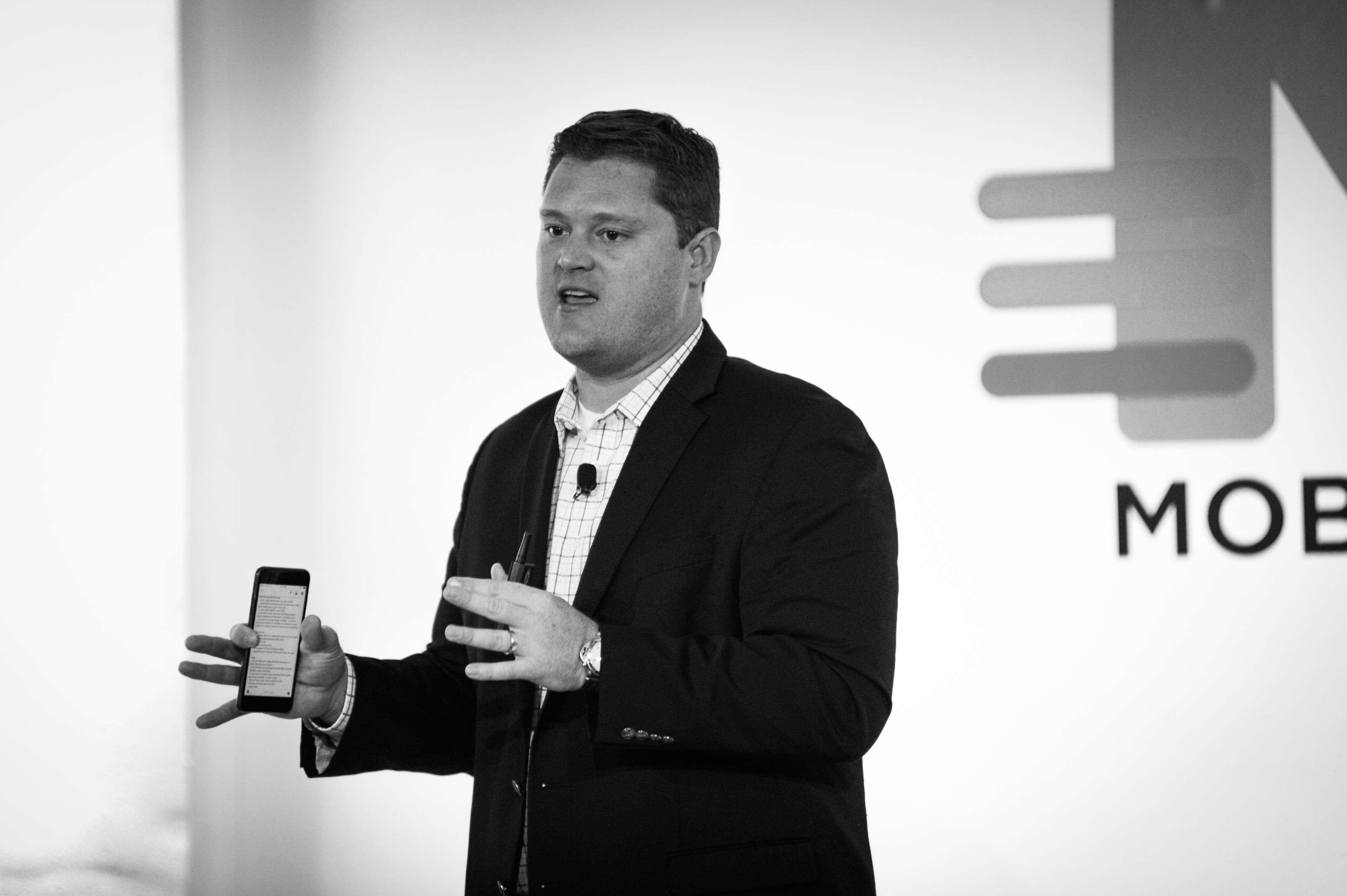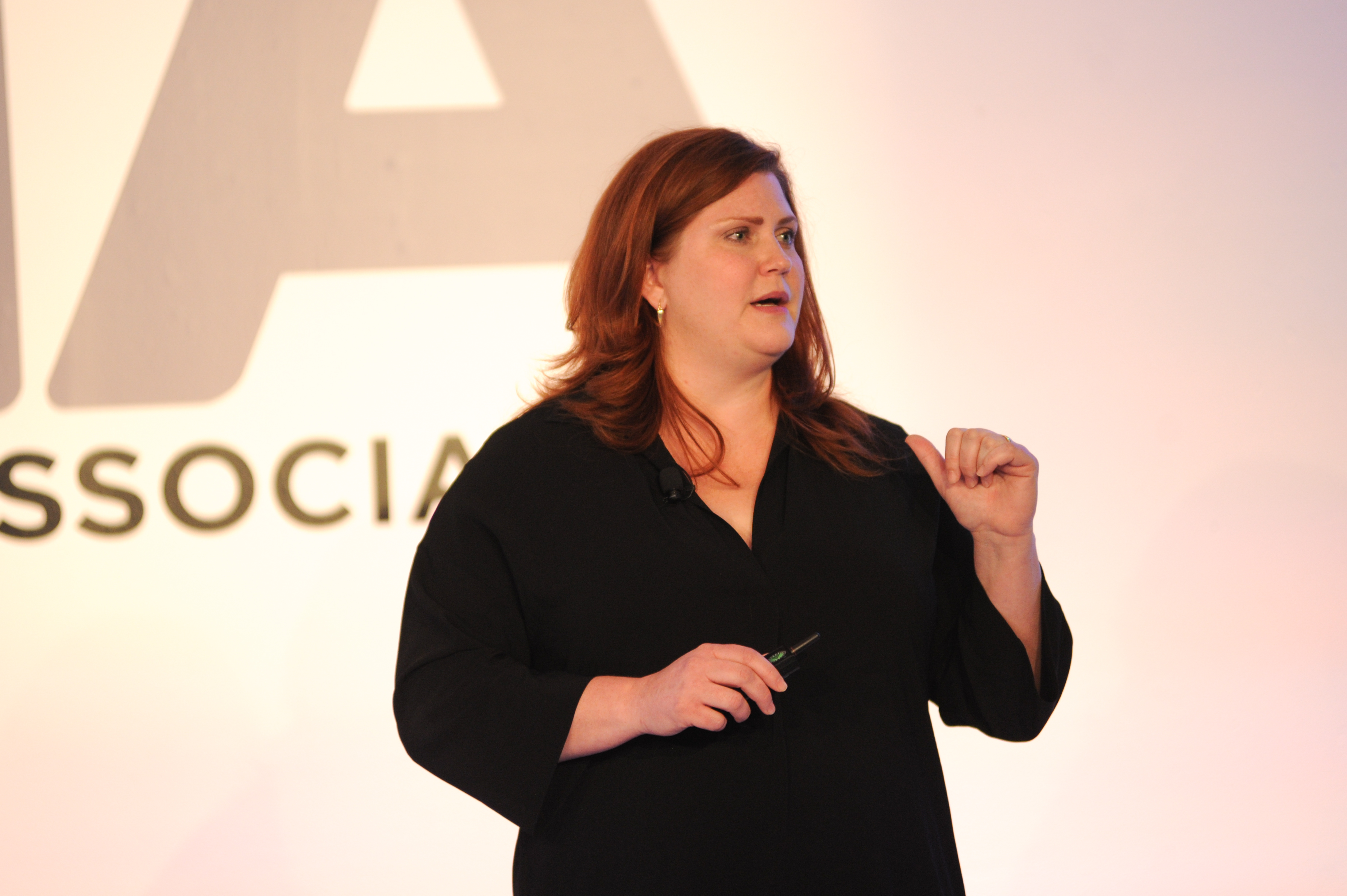Photos from MMA Location Leadership Forum
Click to view full gallery
No matter what kind of company you are, it seems, you want to know more about the role location should play in your marketing. That was a clear takeaway from the MMA Location Leadership Forum, held on April 5 in New York.
At the day-long forum, marketers ranging from consumer packaged-goods companies to insurance companies to quick-service restaurants came together to tell the sold-out crowd how location is changing the way they go about their business.
In his opening remarks, Dipanshu “D” Sharma, founder and CEO of xAd – the Forum’s presenting sponsor – pointed out that location-targeted mobile ad spend is expected to double to more than $32 billion by the end of 2021, when it will comprise 45 percent of all mobile spending. There’s a simple reason it is so attractive to marketers. “Location is pure intent,” he said.
With that, here are seven examples from the conference of what location means to individual verticals.
 What location means for CPG.
What location means for CPG.
Can marketing for iced tea be impacted by location targeting? In a morning session featuring Lucia Ying, Senior Brand Manager of PepsiCo’s Lipton, and Monica Ho, CMO of xAd, it was clear the answer is yes. Ying spoke of how her brand used location – in conjunction with Walmart – to move the needle on a Lipton line extension. “Location-based data really helps us ground where the purchase needs to be,” she said. Ying stressed that there’s a strong correlation between behavioral data and location. A test Lipton did with the retailer showed that location data aimed at targeting potential Lipton customers who hadn’t recently shopped at Walmart worked, giving the brand an incremental lift.
- What location means for insurance companies.
For many companies and categories, location is all about tracking the point of purchase down to the sale, but John Baronello, Director of Marketing Analytics at Allstate, demonstrated how it is extremely valuable even to a business where 97 percent of sales happen offline. In partnership with the MMA, the company recently completed a SMoX (Cross-Marketing Attribution) Study in which location data helped the company identify people who were in the market for auto or home insurance. He described location as “an extension of behavioral targeting. There’s power in the combination of data signals.” Through its participation in SMoX, Allstate has taken a whole new approach to data, so that it can get a unified view across on and offline channels. “[The SMoX research] wasn’t meant to build a data structure, but it ended up working really well with us,” Baronello said.
- What location means for QSR
 The power of location for quick-service restaurants may be obvious, but Brandon Rhoten, VP of Advertising, Media and Digital at Wendy’s, made it clear just how crucial it is becoming to his category during his morning keynote. The brand has been using location extensively to make sure it is there at the moment consumers are making the decision to “turn right into McDonald’s or left into Wendy’s.” For Rhoten, a consumer’s location and preferences are bigger factors than simple demographics. “I frankly could care less how old you are, how much money you make, what your famiiy situation is,” Rhoten quipped. “Location plays a gargantuan role.” He also highlighted the brand’s use of geo-filters on Snapchat, since consumers who see a friend in real-time at Wendy’s are more likely to go there.
The power of location for quick-service restaurants may be obvious, but Brandon Rhoten, VP of Advertising, Media and Digital at Wendy’s, made it clear just how crucial it is becoming to his category during his morning keynote. The brand has been using location extensively to make sure it is there at the moment consumers are making the decision to “turn right into McDonald’s or left into Wendy’s.” For Rhoten, a consumer’s location and preferences are bigger factors than simple demographics. “I frankly could care less how old you are, how much money you make, what your famiiy situation is,” Rhoten quipped. “Location plays a gargantuan role.” He also highlighted the brand’s use of geo-filters on Snapchat, since consumers who see a friend in real-time at Wendy’s are more likely to go there.
- What location means for automotive.
While there is plenty to talk about when it comes to the power of location for automotive marketing, a presentation from John Militello, Director of Marketing, Volvo Cars USA and Duncan McCall, CEO & Co-Founder, PlaceIQ, focused on how location data gives the brand invaluable insights into the behavior of potential buyers. It’s one way the brand – which doesn’t have the budget of some of its luxury competitors – levels the playing field. ”We have to outsmart and not outspend our competition,” Militello explained. He touted the value of “movement data” which allows the brand to track dealership visits, competitor visits, the driving path of commuters, regular service visits and lifestyle. All told, it’s a powerful package of data that ultimately can help Volvo figure out how to close sales, down to the dealer level.
 What location means for supermarkets.
What location means for supermarkets.
Karen Gough, VP, Indoor Positioning Systems and Services at Philips, presented an eye-opening look at location innovation in supermarkets, such as Carrefour in France, and the Aswaaq chain in Dubai. While beacons are a popular approach to in-store location targeting, Philips has developed a solution that embeds both visible light communication and Bluetooth technology into a store’s LED light fixtures, allowing the supermarket to target customers on an aisle-by-aisle basis, serving up offers, providing recipes and other content, and helping shoppers locate items.
- What location means for hotels.
The hotel business has always been about location, but in his presentation, Joey Martin, Director of Promotional Marketing at Choice Hotels International, showed how the category is pushing forward with marketing innovation in location. With 46 percent of mobile booking happening on the same day as travel, it was essential for the company to build a strategy to lure last-minute bookers. Choice serves up dynamic creative targeted by context, behavior, daypart, location, weather and more to serve the right context at the right moment to the right person. This highly customized approach goes so far as to serve mapping ads to potential customers that narrow down the options of where to stay in the vicinity during the course of the day as rooms for that night get booked. Martin stressed the importance of striving for one-to-one marketing wherever possible.
- What location means for social marketing.
An afternoon presentation from Vayner Media’s Dontae Mears focused on how influencers can be used in new ways when location is factored in. As one example, Mears discussed a “micro-influencer” campaign the agency launched in Denver for Budweiser, which has competition from Coors and local micro-brews in that market. It hired 60 influencers in the market to depict how the brand fit into “their Denver”. The group created more than 300 pieces of content, generated 16 million impressions – way over the benchmark – and began to improve the perception of the brand.
The MMA wishes to thank all of its speakers, attendees and sponsors.
Join us next at the annual MMA Mobile Marketing Leadership Forum (May 9-10) in New York. Speakers include Allstate, Budweiser, The Coca-Cola Company, Grubhub, Hallmark, Philips, RetailMeNot, Rosetta Stone, Samsung, Supercell, Tune, Twitter, Vayner Media, Zurich and more. Register here.
Other events in the MMA Forum Series you may be interested in:
 What location means for CPG.
What location means for CPG. The power of location for quick-service restaurants may be obvious, but Brandon Rhoten, VP of Advertising, Media and Digital at Wendy’s, made it clear just how crucial it is becoming to his category during his morning keynote. The brand has been using location extensively to make sure it is there at the moment consumers are making the decision to “turn right into McDonald’s or left into Wendy’s.” For Rhoten, a consumer’s location and preferences are bigger factors than simple demographics. “I frankly could care less how old you are, how much money you make, what your famiiy situation is,” Rhoten quipped. “Location plays a gargantuan role.” He also highlighted the brand’s use of geo-filters on Snapchat, since consumers who see a friend in real-time at Wendy’s are more likely to go there.
The power of location for quick-service restaurants may be obvious, but Brandon Rhoten, VP of Advertising, Media and Digital at Wendy’s, made it clear just how crucial it is becoming to his category during his morning keynote. The brand has been using location extensively to make sure it is there at the moment consumers are making the decision to “turn right into McDonald’s or left into Wendy’s.” For Rhoten, a consumer’s location and preferences are bigger factors than simple demographics. “I frankly could care less how old you are, how much money you make, what your famiiy situation is,” Rhoten quipped. “Location plays a gargantuan role.” He also highlighted the brand’s use of geo-filters on Snapchat, since consumers who see a friend in real-time at Wendy’s are more likely to go there. What location means for supermarkets.
What location means for supermarkets.